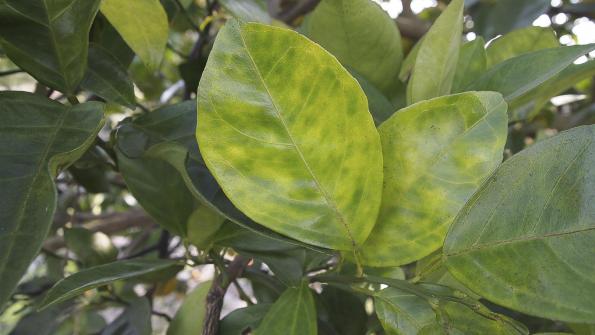
Efforts to combat citrus greening or Huanglongbing (HLB) will receive a five-year, $25 million per-year shot in the arm, thanks to the 2014 farm law.
An additional $6.5 million was given to several other projects through the USDA’s Huanglongbing Multi-Agency Coordination Group (HLB MAC).
The USDA programs will fund multi-state, multi-disciplinary research to find a cure for the deadly citrus disease.
Grant funding information is available.
Successful applicants are expected to engage stakeholders to insure solutions are commercially feasible. Due to how grant funding works, a USDA spokesman says it is umknown which agencies, organizations, or universities could receive funding.
Projects should also include an economic analysis of the costs associated with proposed solutions.
A letter of intent to apply is due to the National Institute of Food and Agriculture (NIFA) by June 27. Full applications, requested based on relevancy review, are due Sept. 29.
“USDA is committed to the fight against citrus greening, including making major research investments to counter this destructive disease,” said U.S. Agriculture Secretary Tom Vilsack.
“The citrus industry and the thousands of jobs it supports are depending on groundbreaking research to neutralize this threat.”
Since there are wide differences in the occurrence and progression of HLB among the states, there are regional and national priorities for the Citrus Disease Research and Education Program (CRDE). These priorities fall within four categories: those which deal with the pathogen, insect vector, citrus orchard production systems, and non-agricultural citrus tree owners.
More studies
The HLB MAC will also fund three new projects to combat citrus greening. About $2 million will go to field-test antimicrobials that have shown promise in combating HLB in laboratory and greenhouse studies.
An additional $2 million will support the deployment of large-scale thermotherapy. Studies indicate heating a tree to 120 degrees for approximately 48 hours can kill the HLB bacterium in the upper part of the tree which allows the tree to regain productivity. The funding will address the challenge of identifying quick and practical ways for growers to use the technology on a large scale.
The remaining $2.5 million will establish several model groves in cooperation with Florida's citrus health management areas. A model grove would use best management practices – systematic surveys, timely chemical treatments, new planting strategies, and the removal of dead and abandoned groves so growers can produce healthy citrus crops even when HOB is present.
Secretary Vilsack created the HLB MAC group last December to foster greater coordination among federal and state agencies dealing with citrus greening. The group includes representatives from USDA’s Animal and Plant Health Inspection Service, Agricultural Research Service, and NIFA, plus state departments of agriculture and the citrus industry.
The HLB MAC Group will coordinate and prioritize federal research with industry’s efforts to complement and fill research gaps, reduce unnecessary duplication, speed progress, and more quickly provide practical tools for citrus growers.
Additional information on the HLB MAC activities, are found here.
The 2014 farm lawl, which provided funding for today’s investment in HLB research, builds on historic economic gains in rural America over the past five years while achieving meaningful reform and billions of dollars in taxpayer savings.
Since enactment, USDA has made significant progress to implement this legislation, including: providing disaster relief to farmers and ranchers; strengthening risk management tools; expanding access to rural credit; funding critical research; establishing innovative public-private conservation partnerships; developing new markets for rural-made products; and investing in infrastructure, housing and community facilities to help improve the quality of life in rural America.
For more information, visit www.usda.gov/farmbill.
About the Author(s)
You May Also Like






